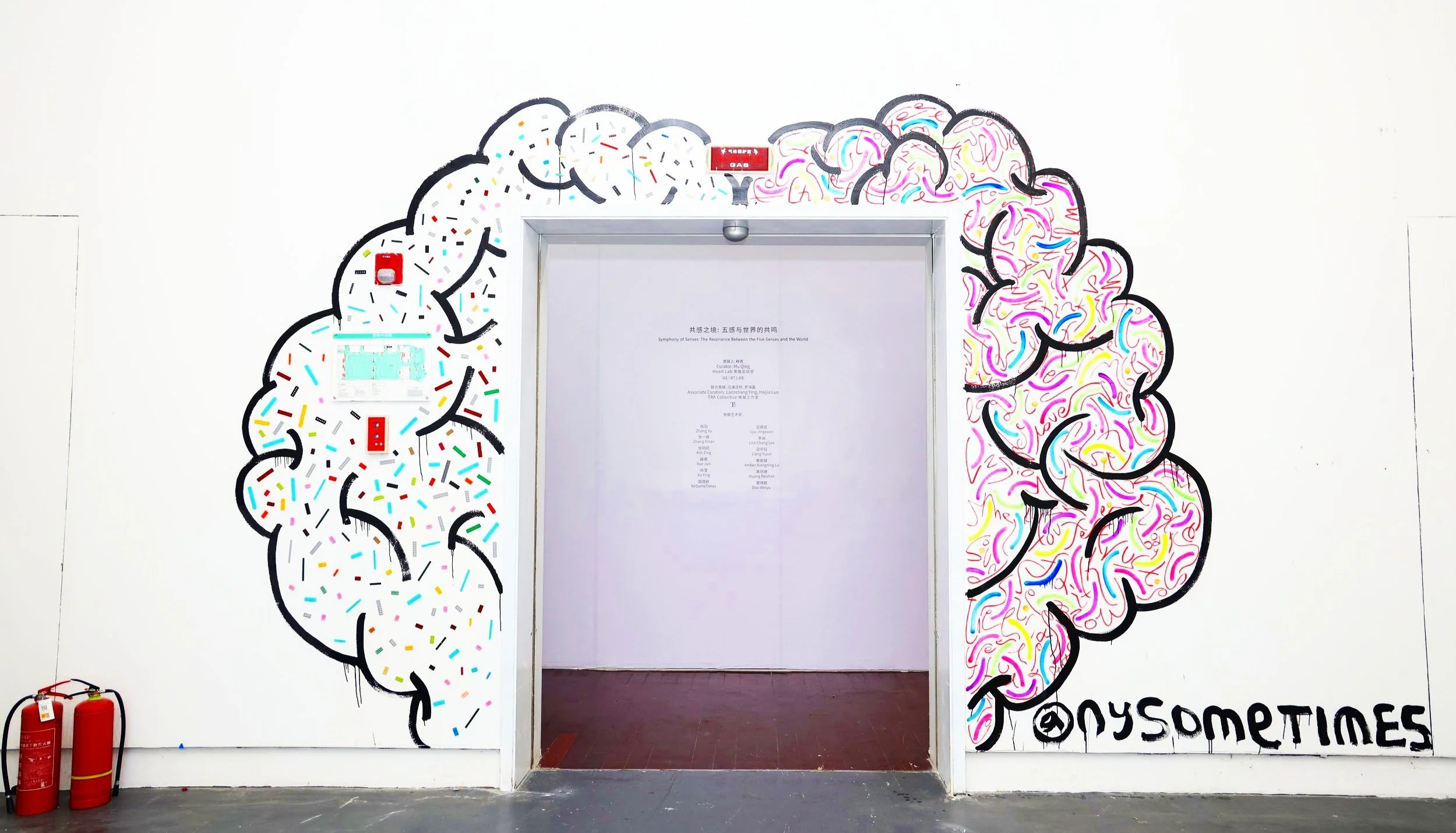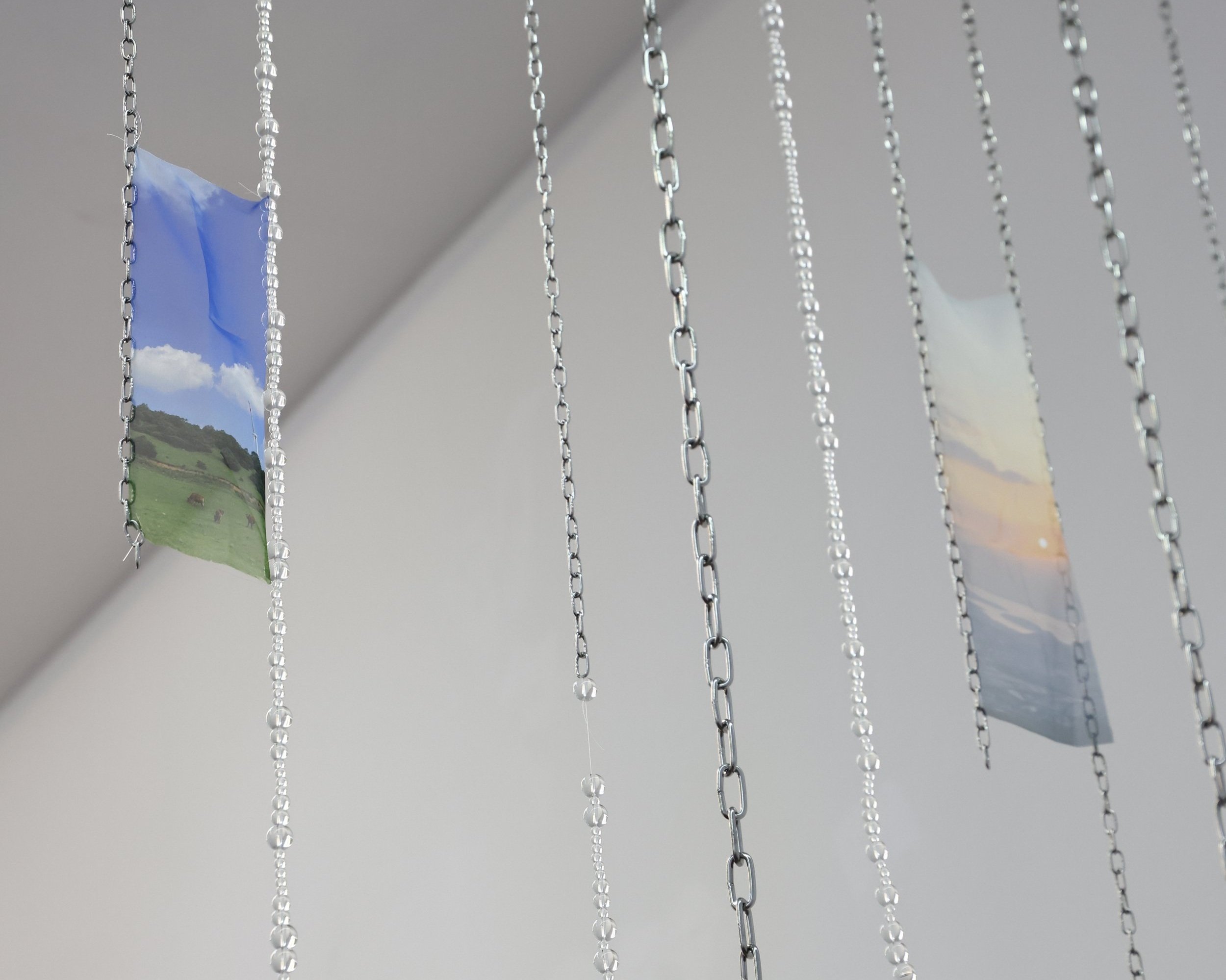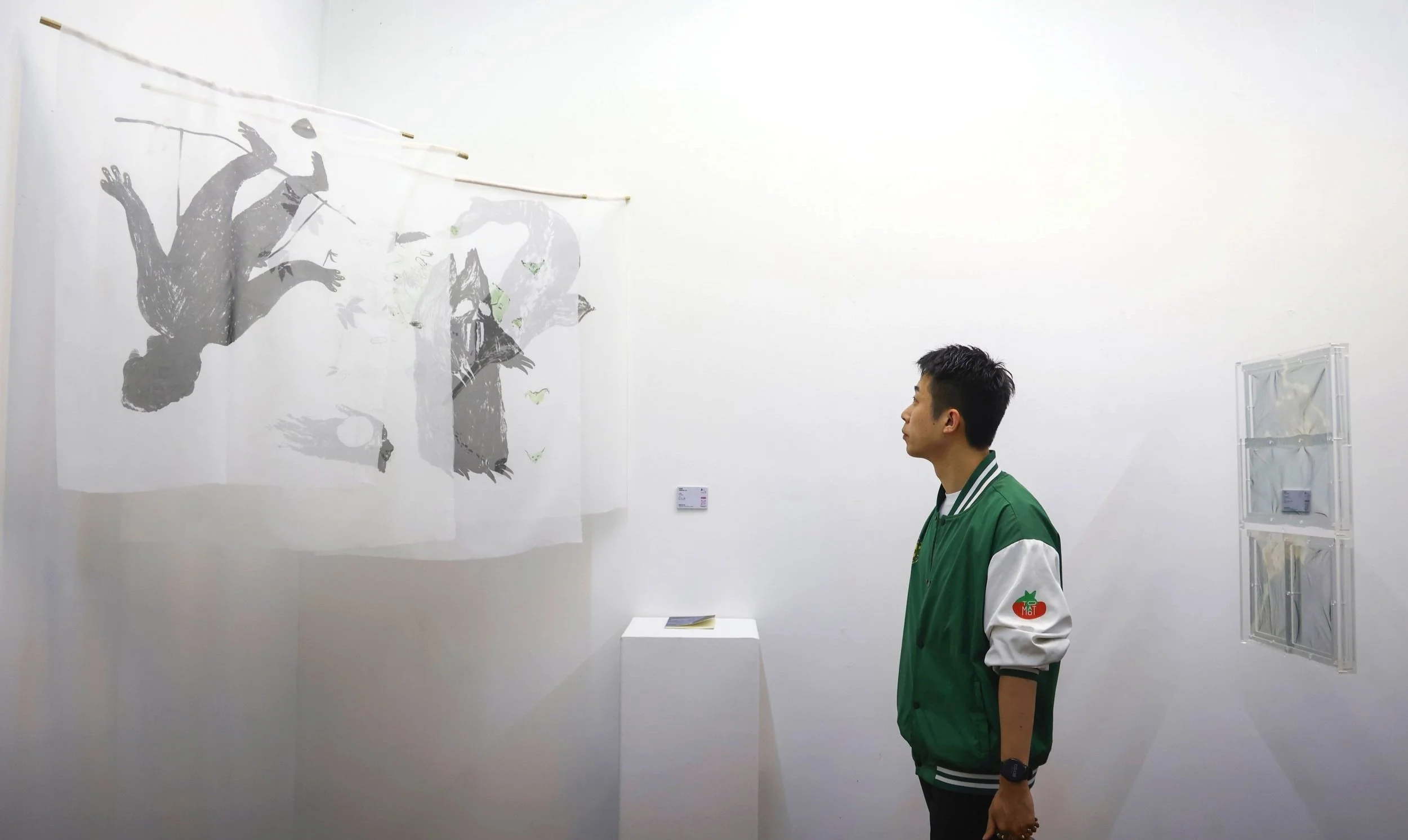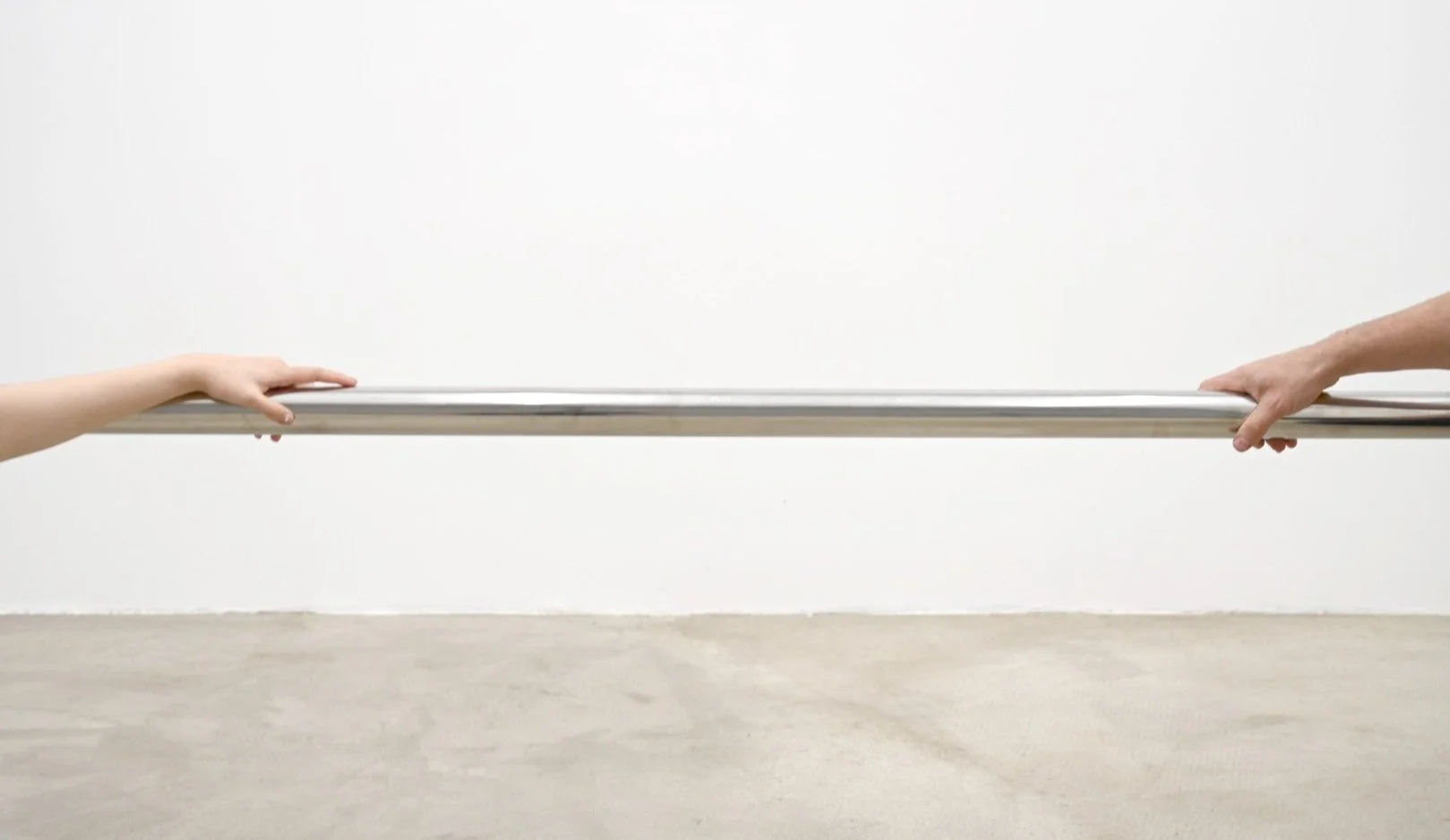Let the Fog Linger: The Science and Spark of Resonant Realms - Part 1
By Yuanya Feng
A Critical Review of the Exhibition:“ Symphony of Senses: The Resonance Between the Five Senses and the World”
The 5th “Art & Design Education FutureLab” in West Bund Art Center N Hall, Shanghai, China
Tucked away in the quiet recesses of Hall N at the West Bund Art Center, amidst a sea of academic-style presentations at the 5th Art & Design Education FutureLab Expo (FutureLab) in Shanghai, the exhibition Symphony of Senses: The Resonance Between the Five Senses and the World stands out as a conceptual wonder. While most of FutureLab’s showcases lean heavily on academic methodologies and present in-progress works as part of their experimental ethos, Symphony of Senses engages in a distinctly interdisciplinary dialogue—drawing from neuroaesthetics, a field that seeks to ground aesthetic experience in natural science.
Curated by Mu Qing (Heart Lab), with co-curators Ying Lanzehang and Luo Haijia (TRA Collective), the exhibition is introduced through a curatorial statement that imagines the gallery space as the interior of the human brain. Each artwork is positioned to stimulate one of the five senses, corresponding metaphorically to sensory regions within the brain’s neural map—an idea that sets the stage for a visitor expecting an overtly scientific or technologically immersive experience.
Heart Lab “Symphony of Senses: The Resonance Between the Five Senses and the World”,2024 Future Lab
This expectation is sharply heightened at the entrance: a dramatic, brain-like mural created by the artist NYSomeTimes, with ridged graffiti formations echoing cerebral gyri, symmetrically dividing the space into left and right hemispheres. Yet, as one steps further inside, those initial expectations begin to dissolve—softly and deliberately. Rather than presenting a sterile, clinical rendering of sensory science, the exhibition drifts into something more elusive, poetic, and atmospheric. The viewer is invited not to decode a system, but to feel their way through it—to let the fog linger.
The first exhibition space is framed by two beaded curtains created by artists Huang Peishan and Zhang Mingshuo (Ash Zing), with the former’s work Landscape #2: Being in the World (2024) establishing a light and delicate atmosphere. Semi-transparent fabric printed with natural landscapes is embedded within the alternating strands of acrylic beads and metal chains, forming a flowing curtain. From behind it, the soft sound of waves gradually emerges from Lu Xiangning’s sound installation Shattered Waves (2023). The soothing auditory presence accompanies a gentle stirring of visual memory—but not solely of the sea. Just beyond the curtain, one encounters Xue Jun’s hanging installation Staying in Place (2024), directly facing the viewer.
Huang Peishan,Landscape #2: Being in the World, “Symphony of Senses: The Resonance Between the Five Senses and the World”,2024 Future Lab
The central element of Staying in Place is an acrylic window covered with pale insect-proof mesh. Its visual cues are semi-transparent, yielding space to olfactory signals. The scent of camphor, embedded into the acrylic material, is released upon touch—evoking the smell of the artist’s childhood home. This sensory trigger calls forth memories of frequent moves during the artist’s early years and the ever-changing views beyond the window. The image printed on the mesh screen is faint and elusive, quietly awaiting the viewer’s own camphor-scented visual memories to be projected onto it.
Originally, the piece was intended to face an actual outdoor scene, reinforcing the function of the “window” as a visual guide. But placed now in a sealed exhibition hall, the line of sight instead extends toward four gauzy panels behind the window— Lü Jingxuan’s installation In the River. Based on ethnographic research in a riverside village, the artist translated oral histories and local folklore into mythological figures printed on fabric. These gauze panels serve as vessels of indigenous memory tied to the watersheds of four rivers in Nanjing.
Xue Jun,Staying in Place; Lü Jingxuan, In the River, “Symphony of Senses: The Resonance Between the Five Senses and the World”,2024 Future Lab
These four works, each distilled from individual memories, channel perception through sight, sound, smell, and touch—reminiscent of Proust’s madeleine. Though arising from different origins, they converge within the exhibition into a single intimate tableau, where distinct memories overlap and resonate within a shared space. Each piece leaves room beyond its primary sensory experience, allowing emotional memory to unfurl in the viewer. In this way, the first layer of meaning in Symphony of Senses emerges: a symbiosis between artist and audience, where the artwork becomes a kind of sensory “madeleine”—a trigger through which both creator and viewer revisit their own pasts.
This awakening of the senses and memory continues in other works throughout the same section. At the center of the space stands the installation 13 Hours: Disappearing Temperature (2021), composed of a steel pipe suspended between two heavy wooden crates, each housing a cooling and a heating device at either end—pushing hot and cold toward one another. The installation’s scale and material weight dominate the room, yet its emotional tone is unexpectedly tender and intimate. Artist Dou Weiyu translates the tension and fading of a long-distance relationship into temperature and touch, amplifying the subtle, internal experience of emotional fluctuation.
Dou Weiyu,13 Hours: Disappearing Temperature, 2021, Courtesy the artist
Not far away, tucked into the opposite corner of the gallery, Lu Xiangning’s Fossil (2023) disguises itself as an ordinary hanging lamp. But as one turns and approaches, a built-in sensor is triggered—and the light switches off. The relationship between the viewer and the lamp echoes the polarized steel pipe installation across the room: a gap remains, irreducible and unresolved. Inside the lampshade, a 3D-printed resin moth endures the seemingly arbitrary shifts between light and dark, a metaphor for the artist’s emotional repression during solitary isolation amid the pandemic.
Both works give tangible form to intangible sensations, transforming emotional weight into sensory experiences—they are acts of translation as well as metaphor. “Empathy” occurs in the tension between reality and illusion, where feeling and intellect co-deconstruct complex relationships and emotions.
In a different register, New Species – Let Us Shape the Future’s Voice Together (2023) documents Liang Yujue’s experimental translation between sound and vision. Through music, the artist invites visually impaired children to imagine a new species called “AVAS.” Their auditory responses are then interpreted into paintings. Simultaneously, the sound itself is converted into data and visualized as engraved diagrams—mechanically rendered images etched onto vinyl records and placed side-by-side with the paintings.
After two layers of translation, the sound within the installation becomes lost in translation. The children’s imaginative visions of this new species, rendered through industrial, mechanized aesthetics, give rise to a subtle cyberpunk undertone, making the work increasingly elusive. Between future and present, biology and machinery, sight and sound, the stability of sensory correspondence collapses. Yet in this disorientation lies a powerful subversion—an undoing of the normative framework imposed by the fully sighted. The piece challenges our overreliance on vision, urging a redefinition of what it means to truly “see.”
By a curious coincidence, Huang Peishan’s The Taste of Eating also reexamines the nature of the senses—this time through the disorientation between sight and taste memory. Semi-transparent food models, made of colorless, odorless acrylic and resin, are arranged on a uniform table surface. Words that describe flavors and textures crawl in low relief across the table, mimicking the appearance of language as texture. Once color, smell, and texture are stripped away—when food becomes a mere visual approximation—can we still recall its actual taste? What does taste, or the memory of taste, really mean? Can it exist independently from other senses? The work offers no definitive answers. Instead, it teases and probes, playfully raising questions about perception, memory, and the interconnectedness of our sensory experience.
Huang Peishan, The Taste of Eating, 2024,“Symphony of Senses: The Resonance Between the Five Senses and the World”,2024 Future Lab
Neuroaesthetics may offer a scientific framework to deconstruct aesthetic experience and demystify art, but by this point in the exhibition, the curatorial position is clear: neuroaesthetic methods are enveloped in artistic aura, employed not to reduce but to enhance the experience of beauty. During guided tours, the curator can explain in detail the neurological rationale behind the selection and arrangement of works—such as how the exhibition must begin gently and subtly to align with the sensory awakening process of the human body, or how smell, being the most powerful trigger of memory, justifies the inclusion of Staying in Place, with its camphor-scented acrylic window following neuroscientific principles.
Yet the exhibition itself offers almost no accompanying text. It doesn’t explain its neuroaesthetic methodology—it simply presents a carousel of the senses, allowing the five sensory experiences to flow, shift, and interact. But the act of foregrounding perception can also take on entirely different expressions.
The first space of the exhibition is soft and delicate—white walls, diffused lighting, and small, refined works that isolate and explore individual senses like toys on a shelf. In contrast, the second section of the gallery offers a nearly opposite sensory experience, both in spatial arrangement and in the artworks themselves. Behind black curtains, the second gallery is divided into three dark chambers, each dominated by a single immersive work, delivering intensified sensory impact.
Where the first part moves from gentleness to nuance, the second shifts from brightness to darkness, from quiet subtlety to expressive intensity, from sensory fragmentation to a unified, visceral blow. These two parts may be understood as thesis and antithesis of the exhibition’s central theme—resonance or empathy.
The Original Review is Posted on Future Lab in Chinese
https://mp.weixin.qq.com/s/WzXIMM7azer-dAFzZ3y7QA






